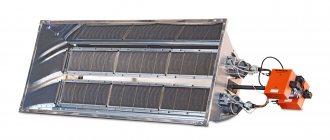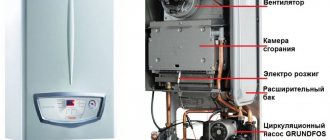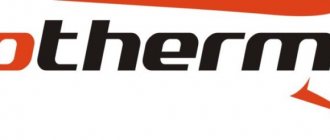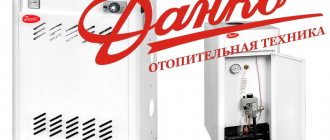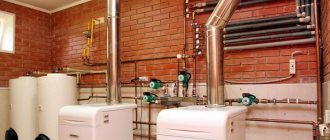Practical infrared gas burner – This is a convenient autonomous device for heating rooms not connected to heating systems. The equipment is easily controlled and quickly creates a comfortable temperature for the user. Does not require serious maintenance and uses blue fuel economically.
Before purchasing, we recommend studying the rating of the most popular models of portable heating equipment. It identifies the key parameters of the best-selling devices and indicates the pros and cons of equipment from different manufacturers. The information will help you choose and buy the right gas burner.
IR burner - what is it?
Infrared ceramic gas burner is widely used due to its high efficiency and heat output. They run on natural gas supplied from a centralized network or cylinder.
Such installations are characterized by low weight, which means high mobility. In their design, they can have two different types of emitter: metal or ceramic.
Such burners are perfect for heating domestic premises; they can be used outdoors and in other places with good ventilation.
Gas infrared heater - operating principle
Unlike convectors, which heat the surrounding air masses, radiators have a directional type of impact. They transfer thermal energy directly to objects, which leads to fuel savings and significantly speeds up the work process. Considering gas infrared heaters, how these modern devices work, they can be compared with the popular UFO devices, but here, instead of an electric heating element, the heat source is a burner.
Main components of a gas heater:
- frame;
- mixing chamber;
- diffuser;
- ceramic element;
- protective grille;
- control valve;
- pressure gauge;
- hose;
- gas cylinder with reducer.
To start up, open the valve on the cylinder or pipeline and carefully bring the lighter to the grill. When performing the ignition process, it is advisable to stay away from the flame source. There may be a slight pop at first, but the fire is quickly drawn into the ceramic element. Mixing of gas and air occurs at the inlet of the gas infrared heater. Using a divider, the combustible mixture is evenly distributed over the surface of the emitter and burns, emitting powerful heat.
Types of portable gas heating systems
The line of gas heaters has three types of heating systems, significantly different in operating principle and appearance.
How do infrared gas cylinder heaters work?
The principle of operation of such a heating device is similar to the operation of the sun; it, emitting infrared waves, heats the surfaces of walls and furniture that fall within its radius of action. The temperature in the room begins to rise, increasing due to the release of heat from these objects. Typically, such heaters are used as additional heating, although their power will be sufficient to heat a small room.
The device of an infrared gas heater in a simplified form can be characterized as follows:
- Air and gas are mixed in the housing, and the resulting gas-air mixture hits the ceramic elements;
- the resulting mixture is burned on hot ceramic tiles of an infrared gas heater;
- the generated heat is transferred to all surfaces within the range of action.
There are tubular portable ones, their operating principle is not significantly different, but the mixing of air with gas occurs in a blow burner, and the heating elements are metal tubes through which this mixture passes.
The advantages are that such heating is economical, and the air in the room heated by infrared rays is not too dry.
The disadvantage is the limited heating area; heat spreads only on those surfaces that are directly under the radiation; if the room is large, then it will be uncomfortable to stay away from the heat source.
Catalytic gas heater for a summer residence: main advantages and disadvantages
The operating principle of such heating systems is based on the flameless combustion of a small amount of fuel on the surface of the heating element. Unlike the bulk of fuel combustion systems, its consumption is not at all high, this is due to the small amount of combustion products. Heat release occurs in this way:
- The surface of the catalyst (heating element) is heated to a temperature from +200 to +500°C.
- Liquefied gas vapor falls on the catalyst, which is made of fiberglass coated with platinum.
- During the combustion of fuel, heat is generated to heat the room.
Important!
Catalytic heaters are not only gas, but also gasoline; the operating principle of such heating systems is the same.
According to reviews, the advantages of gas ceramic heaters for summer cottages include:
- Safety
– The system is very easy to use and requires only minimal precautions. - Environmentally friendly
- compared to analogues, gas combustion products are practically absent. - Efficiency
– compared to other gas heaters, fuel consumption is minimal.
The only downside is the small area that they can heat.
Converter-type gas heaters for garages
Among all heating systems, a gas convector is most similar to conventional batteries, both in appearance and in terms of the maximum heated area. Its body is made of metal and coated with paint that can withstand high temperatures. Slots in the lower and upper parts of the convector serve to ensure air circulation. The operating principle is similar to a conventional gas boiler.
- a gas convector is equipped with a burner in which fuel is burned; it contains two parts, the main and the ignition (wick). The ignition part is lit all the time, and the main part comes into operation when the temperature sensor cools down to the set value;
- while the automation is activated, the gas pressure is regulated using a valve;
- Carbon monoxide is removed using a chimney. They come in two types, forced and natural draft. Those equipped with forced smoke exhaust are safer and environmentally friendly. Their disadvantage is that they cannot work without electricity.
Related article:
Currently, the production technology of electric heaters is expanding and improving. We'll talk about them in this review.
If you have not decided which is the best gas heater to buy for your dacha, customer reviews may be useful. Most often, their high efficiency is highlighted, but fast heating is also considered an advantage compared to other gas heating systems.
Among the disadvantages, they note high gas consumption, which will affect the budget, although they are even more expensive. The main disadvantage is considered to be excessive evaporation of moisture from the air in a room with a working gas convector.
Types of gas-ceramic heaters
Ceramic emitters that use a ceramic panel can be divided into several categories to make selection easier. The classification takes into account the main purpose and type of installation of the system.
Classification by type of construction
It is customary to distinguish the following types of heaters, depending on the design:
- Wall-mounted radiators - the appearance of a portable ceramic gas heater resembles a classic split system. The ceramic plate has different thicknesses. Typically, increasing ceramic width is directly related to performance. The wall-mounted device is small in size and highly efficient.

- Infrared ceiling gas-ceramic heaters - in appearance they resemble a regular IR panel. Ceiling radiators have high performance and are therefore often used for industrial purposes.
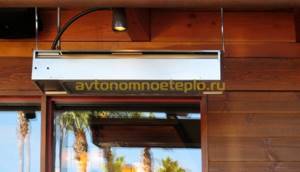
- Floor-standing models are characterized by maximum performance. Used for residential premises. The appearance resembles an electric fireplace, only instead of conventional lamps, a ceramic heating panel is installed.

- Desktop models - the features of using the heater are associated with the presence of a mechanism that allows the emitter body to rotate around its axis, which increases the efficiency of the device and makes it possible to evenly warm the room.
Classification by main purpose
There are several types of ceramic-coated heaters. It is customary to distinguish the following models, depending on the characteristics of operation:
- Small-sized tourist ceramic gas heaters for tents. Ignition is performed using a piezoelectric element. They operate on bottled gas. Equipped with several levels of protection. Ideal for winter tents. They are equipped with a disposable cylinder, so refilling is excluded.

- Household models - installed as the main or additional heating source. Can be used for garages, small workshops, residential premises. Household ceramic gas heaters can be installed in cottages and other unheated premises. Since the heating process uses infrared radiation, the heat is felt immediately after turning on the unit.
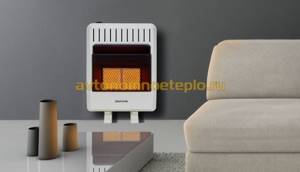
- An industrial heater with a gas-ceramic radiator is the most efficient heating device, if only performance is taken into account. The emitters are installed on the ceiling. The distance from the heater to the heated surface is 5-8 m. Industrial models have high performance, sufficient to heat 80-90 m³.

Criteria for choosing a heater for a summer house
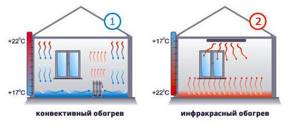
If heating is required for a long time, you should prefer a stationary gas convector. If the device is needed for a temporary stay in the country, where gatherings are expected on the veranda, a ceramic infrared device would be an ideal option. There are other criteria for choosing a good device that are worth considering. First of all, this is power, on which productivity depends. The indicator must correspond to the intended use. A device with a power of 1 kW will warm up well to fifteen “squares”. If the device data sheet indicates 4 kW, the unit is suitable for a room up to 60 m2. You should not purchase high-power devices for seasonal use, since the device will not be able to work at full capacity, and you will have to spend much more money.
It is also necessary to check the capabilities of the unit and its costs. Devices, depending on power and functionality, can cost from two to 30 or more thousand rubles. The price depends on the set of functions and the brand. The highest quality equipment suitable for domestic gas lines and cylinders is produced by the following companies:
- Ballu (an international company headquartered in Hong Kong);
- Bartolini (Italy);
- Timberk (Sweden);
- "Pathfinder" (Russia).
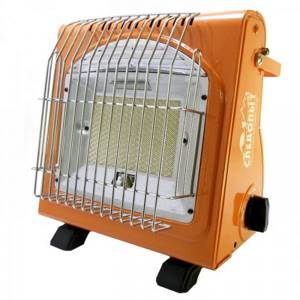
Pathfinder
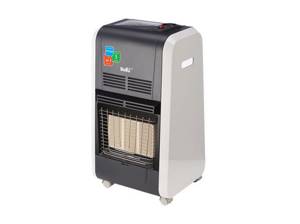
Ballu
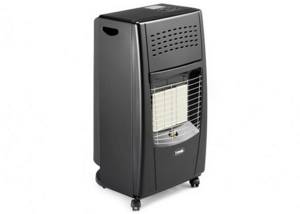
Bartolin
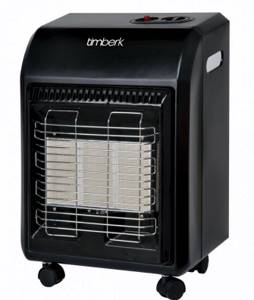
Timberk
The first company has branches in Russia. The popular and inexpensive model Ballu Bigh-55 is produced here.
Pay attention to the heating temperature inside and outside the device. The higher the first indicator, the faster the room will warm up. The body of the unit should not get too hot, otherwise it will be dangerous to operate the device at home.
The choice is influenced by dimensions, weight, ease of transportation. A plus will be the presence of special devices to improve mobility, such as a handle or wheelbase, as well as piezoelectric ignition and moisture protection functions. Its level is usually indicated by markings on the surface of the housing.
If you need a portable option, take a look at models with an internal gas cylinder lock. Features that reduce the risk of fire are also important, such as auto shut-off and rollover protection. Purchase the unit only in a special store so that the product has a technical passport and a service guarantee.
Pros and cons of different types of gas heaters
The large selection of different models often simply leads to a stupor. Which heater will be better? Unfortunately, there is no definite answer; each type is bad in some ways and good in some ways. To choose the unit that is suitable for your needs, you need to familiarize yourself with their pros and cons.
We will not study the convection heater, since there are more modern and safer models. Instead, let's consider a new generation ceramic gas heater. Below are tables with the positive and negative characteristics of each type.
Catalytic
| pros | Minuses |
| Very compact. The operating principle allows you to keep the size of the device to a minimum. | Cannot be used in confined spaces. Be sure to have good ventilation. |
| No additional pipes or dirt, since there are no combustion products. | |
| The device does not require electricity to operate - it is completely autonomous. | |
| Economical fuel consumption. | |
| Safety. There are no burners or open flames. |
These devices are very effective. As stated above, heating can occur in three ways. Some models are additionally equipped with fans for uniform heat distribution.
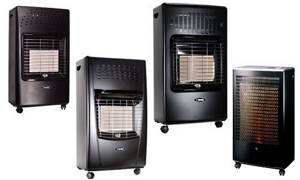
Infrared
| pros | Minuses |
| Possibility of heating open and closed spaces. Such models are great for cafes, playgrounds or pool areas. | Burns oxygen. That is, ventilation is necessary in any case. |
| Large coverage area - outdoor models can heat objects at a distance of up to 6 meters. | Low fire protection. Even with the maximum protective measures taken by manufacturers, the device can cause a fire. |
| Mobility. Lightweight and compact models. | |
| High efficiency. | |
| In most cases, the device operates completely autonomously. |
Ceramic
| pros | Minuses |
| Easy to use. | Requires regular maintenance, which is not an easy task. The list includes: calibration, filling the cylinder, cleaning the main parts and checking for wear. |
| Mobile and compact. | |
| Reliable. | |
| Economical in comparison with liquid fuel analogues. | |
| Heats up the room very quickly. | |
| Safe. |
How to choose a quality gas heater?
After we have figured out what obstacles homeowners may face when installing gas equipment, we need to understand how to choose a good unit. It should be noted that the chimney should not be made of brickwork, since the gas generated has a high sulfur content.
Most heater manufacturing companies offer additional chimneys suitable for the heating system. They all have different properties and materials of manufacture. The requirements remain the same: resistance to acids and corrosion.
One of the best purchase options is a ceramic gas heater. This model of equipment retains heat excellently and is durable. The main criterion when choosing an installation should remain its power. Depending on this indicator, the maximum heated area of the room is determined.
Moreover, if the room is large enough and the heater power is selected accordingly, you may encounter the problem of insufficient capabilities of the shield. In this case, you need to use bottled liquefied gas.
The installation must also match the appearance of the room it is being installed in, as it has a high cost to dismantle. By type of equipment, depending on personal preferences, you can make a choice in favor of a fireplace or a convector.
To heat the room as quickly as possible, you should choose models with a built-in fan, but the design of such a device often requires the additional use of a source of electricity.
Differences from gasoline and multi-fuel models
Gas appliances are the most common, but not the only type of catalytic equipment. Heating units can also operate on other types of fuel.
Depending on this criterion, three more types of devices are distinguished:
- Gasoline. Devices with a built-in fuel tank connected to a catalytic cartridge. Gasoline vapors in them enter the cartridge and undergo oxidation when interacting with the catalyst. Mobility and modest size contribute to the particular popularity of gasoline heaters among outdoor enthusiasts, hunters, and fishermen.
- On technical alcohol. Designs with a special internal compartment into which a container with alcohol or dry fuel is placed. They are presented in small-sized models weighing no more than 1.5-2 kg. They are used exclusively in field conditions: they heat tents, dry clothes, and heat food and drink.
- Multi-fuel. Universal heaters that work with any available type of fuel, both gaseous and liquid. They are characterized by rather limited power - 500-1200 W.
Apart from external characteristics, there are no significant differences between gas, gasoline and multi-fuel catalytic heaters. They all work on the principle of catalytic combustion and have a similar internal structure.
Gas appliances are easier to maintain, have high performance, and are designed for a wide range of applications.
Gasoline devices are a little more difficult to operate. To ensure efficient and uninterrupted operation, you need to fill them with gasoline of the highest purity.
Overview of species
The modern market offers a huge number of models of infrared gas burners, which differ not only in their cost, but also in their functional features.
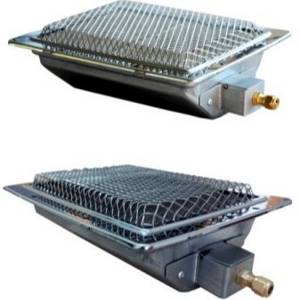
These can be ceramic devices with valve control, with a heat exchanger, small models for fishing or heating the house, as well as burners that run on natural gas or propane.
By method of obtaining energy
Depending on the method of obtaining thermal energy, these devices are divided into three types.
- Convectors - have a burner design, but at the same time in their operation they resemble a gas gun. During fuel combustion, thermal energy appears, the directions of which are controlled by a special fan. The main disadvantage of such a device will be the presence of open fire, as well as relatively large heat losses.
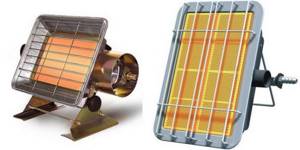
- Catalytic models , the distinctive feature of which is the presence of a catalytic panel. It is responsible for converting fuel into thermal energy by oxidizing it. The fact is that there is no such thing in such a combustion panel, therefore such models are considered one of the safest. However, catalytic panels are quite expensive, so they are rarely purchased.
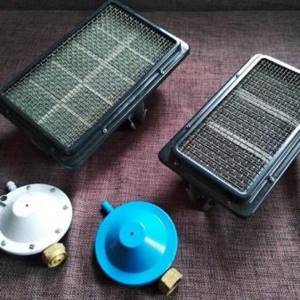
- Infrared devices are characterized by the release of directed infrared radiation. They require the combustion of gas, but can produce enormous amounts of heat and can heat large areas.
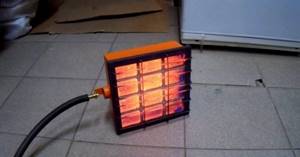
Thus, infrared models can boast significant advantages in comparison with other options. That is why they are often used not only for heating rooms, but also as outdoor heaters.
By accommodation type
Depending on the type of placement, infrared gas burners are divided into types.
- Floor-mounted – mounted exclusively on a horizontal surface. The standard package of such devices includes a special stand or structural legs.
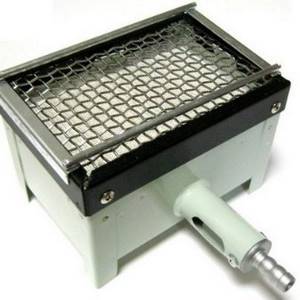
- Ceiling-mounted - hung on the ceiling exactly in the area that will need to be heated. Thanks to this, it is possible to significantly save space in a room with a minimum square footage, since ceiling options do not take up much space.
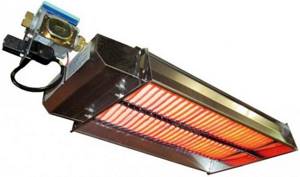
- Wall -mounted ones almost completely repeat the design of ceiling ones, except that IR radiation can be directed even to the opposite part of the room.
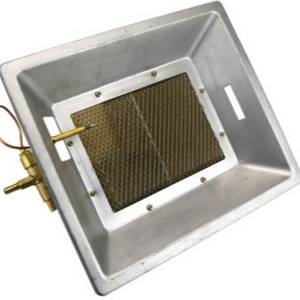
How the device works
The device operates in the infrared wavelength range. For this type of radiation, the air is transparent, so the radiation does not heat it. Only surrounding objects that absorb infrared rays are heated, as a result they become a source of heat.
Due to the peculiarities of the device’s operation, it turns out to be very effective in large spacious rooms compared to other heaters, for example, an electric boiler.
Such devices make it easy to heat rooms with high ceilings, since energy is not wasted on heating the air.
The source of infrared rays in the device is a ceramic perforated panel. It heats up to the required temperature, at which it begins to emit electromagnetic waves.
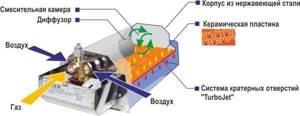
Smooth adjustment of the infrared burner allows you to customize it for each specific task. Due to their high efficiency, such devices are perfect for installation in open areas of cafes, on verandas, in gazebos and in large workshops.
Among other things, the heater provides protection against gas leakage. For these purposes, a special valve is installed. This element has a sensitive thermocouple. If wind or any other external influence extinguishes the flame, the gas supply will stop.
Information regarding the operating principle of the device is provided solely for familiarization and understanding of the basic operation of the burner. Making a homemade heating boiler with an infrared burner is highly not recommended.
The fact is that even in the simplest units, which are not very expensive, there are many sensors that monitor the operation of the boiler.
A backdraft sensor must be installed to prevent the flame from blowing out, an overheating sensor, gas leaks, a temperature sensor that regulates the temperature of the coolant, and a thermostat.
In order for all of the above elements to work effectively in tandem, it is necessary to correctly write a control program for the microcontroller. Even a person who understands programming will need several weeks of intensive work on the software.
It is worth noting that the above are only the tasks that need to be solved to organize the boiler control. Calculating the thermal part can be completely overwhelming work. There are many subtleties in this matter, the consideration of which is necessary.
Among other things, it is worth keeping in mind that not a single gas service will allow you to connect uncertified gas equipment. And this is correct, because the cost of error in this matter is too high.
Moreover, it is better not to “get inside” even into factory devices without appropriate training.
Types and brands of burners
There are several categories of emitters depending on their purpose and installation method. Depending on the design, there are wall-mounted radiators, ceiling-mounted gas-ceramic, floor-standing models, and tabletop options.
Depending on the purpose, there are tourist heaters for tents. These devices are small in size and operate on bottled gas. Supplied with disposable cylinders.
Industrial heaters are the most efficient and can heat rooms of 80-90 square meters. They are installed on the ceiling, and the distance to the heated surface can be up to 8 meters.

Drawing of an infrared radiation burner.
In addition, there are infrared gas boilers that allow you to completely heat a living space. They are quite effective and safe to use. Boilers with a ceramic burner are more efficient compared to electric options.
When choosing such a unit, you should pay attention to such parameters as: gas consumption, main purpose, efficiency of emitters, safety of use, performance.
Among the most popular models are:
- Russian brand Ballu;
- Chinese manufacturer Kovea;
- devices made in Poland by Timberk.
The cheapest option, of course, is Chinese products. Their cost is lower than other analogues by more than 30%. This is where all the advantages of devices from this manufacturer end.
It is worth noting that Chinese models are characterized by low reliability and cannot be repaired after a breakdown. In this regard, you should not be tempted by the low cost. It is better to give preference to more reliable manufacturers.
Advantages and disadvantages
The infrared gas burner is a compact and simple device. Each person can connect it independently without any problems in a few minutes.
The advantages of an infrared gas burner include the following characteristics:
- high reliability - the design of the unit is quite simple, so the likelihood of breakdown is minimal;
- emitters can last a long time, and the device’s lifespan exceeds thirty years;
- the small dimensions of the hiking emitters make it easy to put them in a travel bag;
- profitability - GII has low gas consumption, so such devices are more profitable than electric options, especially when constantly heating large rooms;
- these units are among the safest heating devices;
- high heating efficiency.

Of course, this device also has its disadvantages.
These include the following:
- presence of open fire;
- the operation of the device is based on the combustion of oxygen, so it is advisable to use it in well-ventilated areas;
- The main disadvantage of the unit is the smell from the heater.
Before deciding to use such a heater, you need to weigh all the pros and cons. As follows from the information given above, the use of this device is not advisable in every case.
Gas infrared heater for home
When looking for the best gas infrared heater for home needs, you should definitely pay attention to the manufacturer. Korean devices from KOVEA are reliable and durable. This company makes high-quality devices for the garden, home, and hiking. The Little Sun, Power Sense, Cupid Heater, and Cap Heater series devices have received good reviews.
Ballu gas infrared heaters are always of excellent quality. This international holding produces several series of heaters for various purposes, from floor-standing units Red Evolution to flat ceiling radiators of the BIH series. From European manufacturers, affordable and high-quality models are made by the Polish company TIMBERK. Chinese equipment is 30%-50% cheaper, but is often characterized by mediocre quality and poor maintainability.
Gas infrared ceramic heater
For domestic purposes in residential premises, mainly two types of heating devices are used - infrared gas heaters with a ceramic burner and catalytic devices. The catalytic principle is safer and uses a method of flameless oxidation of fuel at temperatures below 600°C. The chemical process occurs when gas vapor is supplied to a hot plate made of platinum composition and fiberglass. These devices have great power, they are environmentally friendly and are equipped with fans, suitable for rooms over 20 m2.
In ceramic gas infrared models, the radiation temperature is much higher - from 800°C. They are a panel-shaped screen that is heated by an open flame. The advantage of a ceramic device is a longer service life, simple installation and maintenance, and an inexpensive price compared to catalytic devices. They are lightweight and suitable as a portable stove or stand-alone heater for a tent. Small-sized devices are equipped with small 450 g cylinders, which are enough for a short trip outside the city.
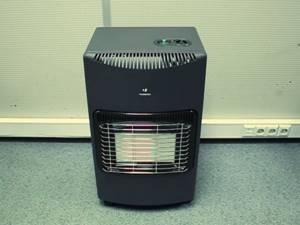
Ceiling gas infrared heaters
When choosing the best gas infrared heater, you can consider a stationary version of the device, designed for constant indoor use. There are many ceiling-mounted devices on sale that have significant advantages. These radiators are distinguished by their increased panel size, high performance and modern design; they are often used to heat large industrial sites. Under the ceiling, they do not occupy any useful space and cover a significant area of the room with their radiation.
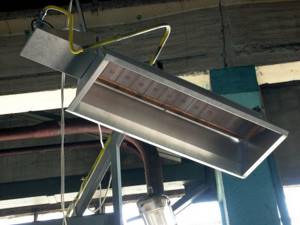
| Convector type heater - modern heating options for the home A convector type heater is a safe modern heating device. Among electric, gas, infrared, ceramic models of wall, ceiling, baseboard type, it is easy to choose a device for heating the room. | Electric heater - how to choose the best option for heating your home? An electric heater can compete with a centralized heating system due to the rapid heating of the air, mobility and the absence of complex installation. Each type of this household appliance has its own advantages and disadvantages. |
| Electric wall heater - what types of heating devices are better? An electric wall heater can replace or complement a stationary heating system. It looks like a fireplace, a picture or a monolithic slab; such a modern option can become the highlight of any interior design. | How to choose a heater - which type is best for heating your home? If you want to know how to choose a heater for your home, apartment or cottage, it is important to understand the existing models, how they differ, and what parameters you should pay attention to so that the device does its job perfectly. |
Catalytic convectors
These devices can operate on electricity, gasoline or gas. Their use is optimal for heating a room of 20 square meters with a power of about 2.9 kW. Gas models are equipped with a fan and are designated “turbo+”.
Catalytic combustion is the use of the principle of “surface combustion”, which is used for flameless gas burners operating on propane-butane; it is characterized by the absence of flame. The process occurs as a result of the oxidation of certain organic compounds in the air.

During combustion, a lot of thermal energy is released, and the degree of heat of the catalyst can be determined by its purple or yellow color. The efficiency is about 80% higher than the same figure for classical devices. Unlike European countries, catalytic convectors have not yet received widespread use among domestic consumers.
Due to the presence of wheels, the design is mobile, so it can be easily moved. The catalytic panel is made of fiberglass.
Bottom line
Infrared gas burners are the best option for heating large rooms. Due to the fact that they do not heat the air, their efficiency is significantly higher than that of their electric counterparts.
Such devices are widely used not only for heating residential premises, but also for heating verandas, gazebos, and open areas in cafes and restaurants. Due to their ease of use and high efficiency, these devices quickly gained popularity in the heating market.
Rate this articleAdd a comment Cancel reply
Name *
Email *
Website
Comment By clicking on the “Submit Comment” button, I accept the privacy policy.
Save my name, email, and website in this browser for the next time I comment.
Popular articlesTypes of welding We understand the drawings of welding seams according to GOST If you say that is your favorite word, you are unlikely to 086.2k.Types of welding
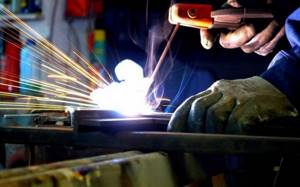
How to learn to cook with an inverter from scratch? In a private house, country house or garage quite often 054.8k. Types of welding
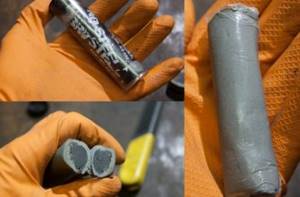
All about cold welding: properties, application, instructions What is cold welding Cold welding - in a broad way 0202You may also like Features of a welding transformer It’s hard for a modern person to imagine creating 03k.
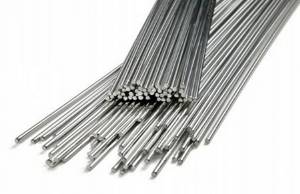
Main types and categories of filler wires for semi-automatic welding Welding wire is the most important consumable material05.4k.

Features and advantages of the CNC metal plasma cutting machine is used as a high-tech method to process 01.4k. Types and use of centralizers in the process of pipe welding A prerequisite for pipe-laying0924 Diagram and features of the welding inverter The diagram and diagram are significantly different from each other.05.3k.
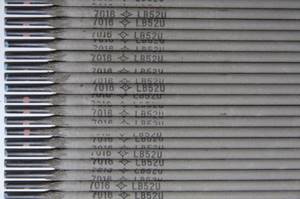
What are the markings of welding electrodes and what is their purpose? Working with manual electric arc welding machines03.1k. Types and principle of operation of welding generators A welding generator is an indispensable device that allows0319
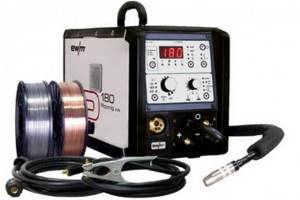
How to make a semi-automatic welding machine? Anyone can make it with their own hands08.6k.
Gas gun or IR emitter
When using a gas gun, several very important points regarding safety must be taken into account:
- Quality and method of organizing ventilation. If an IR gas heater can be connected to similar systems or operate without waste (camping models), then for a heat gun it is necessary to remove emitted carbon dioxide compounds.
- Connecting a gas gun requires a direct connection to the heat flow, which may also pose a risk of explosion, fire, etc.
Infrared heaters on ceramic plates can provide safe heating, as well as comfortable conditions, without drying out the air and heating surrounding surfaces and objects.
Infrared gas burners today are available in various forms and models that can meet the needs of tourists, ordinary consumers and even large enterprises. To choose the right power and type of system, many factors should be taken into account, as well as the operating features of the device.
Was the information about gas infrared heaters helpful?
NOT REALLY
If there is a question about purchasing a gas burner for heating with infrared radiation or the classic version, then you should choose infrared emitters, since they completely pay for themselves in just 2-3 heating seasons.
Previous InfraredBenefits and features of visiting an infrared sauna Next InfraredThe nature and scope of application of infrared radiation in modern technologies

